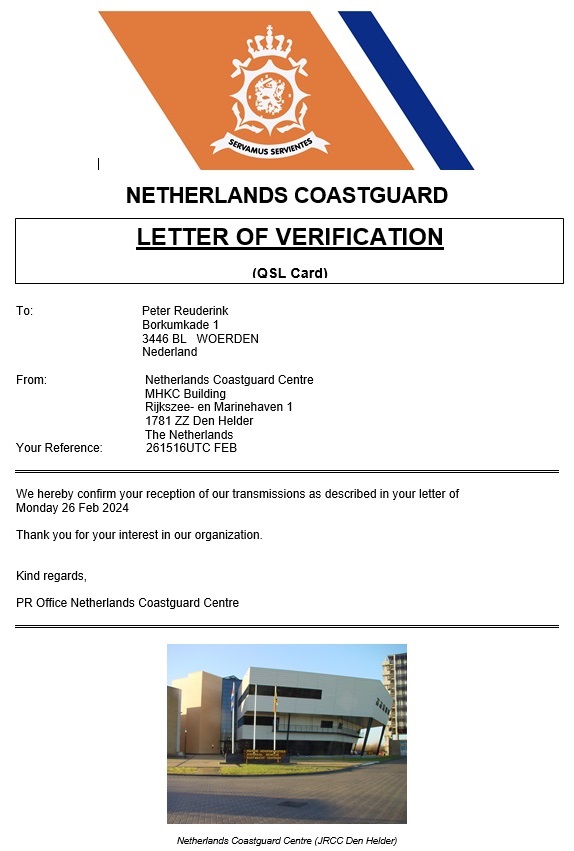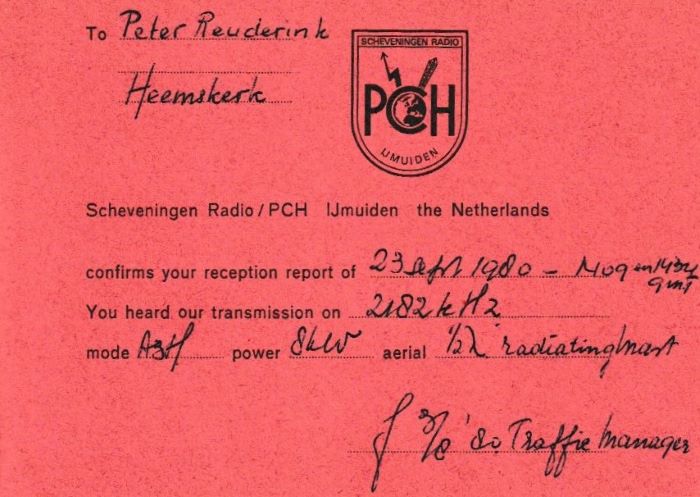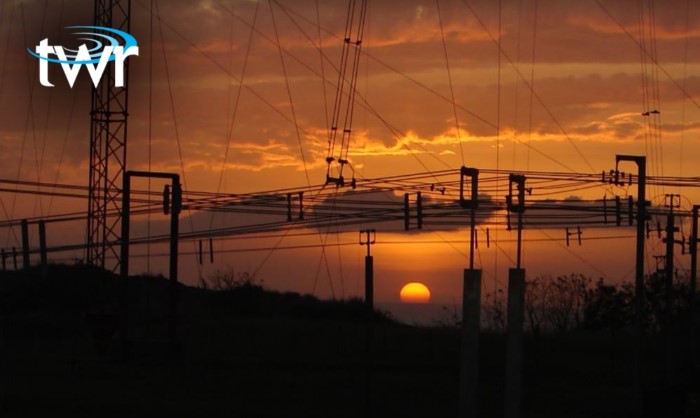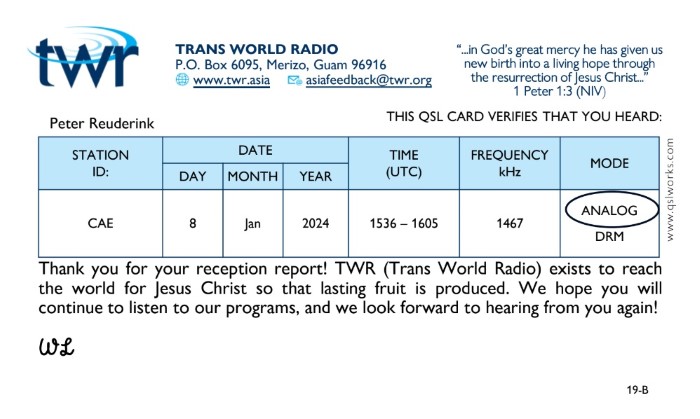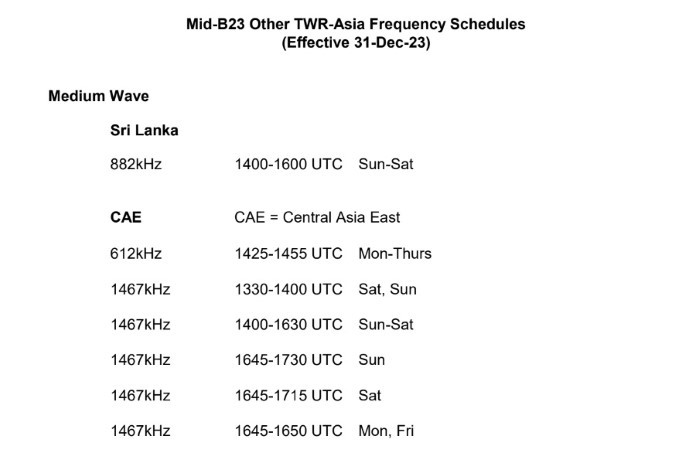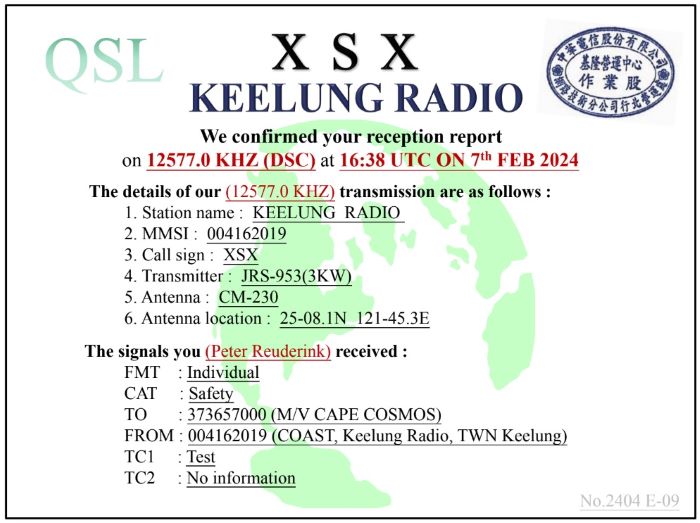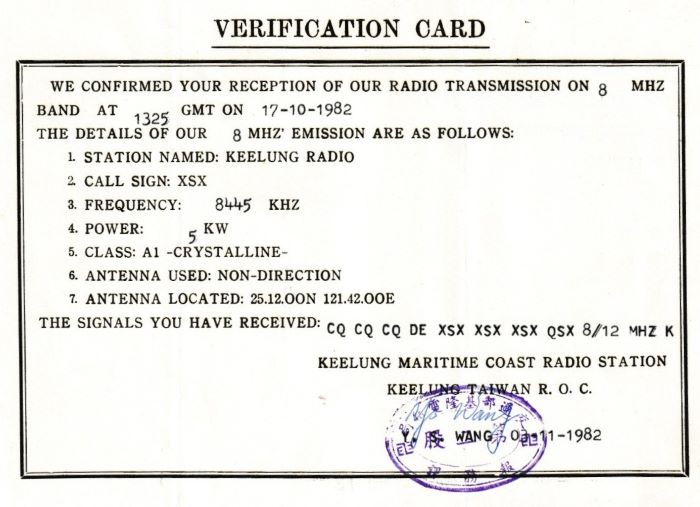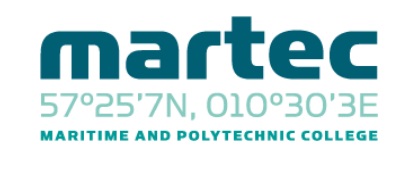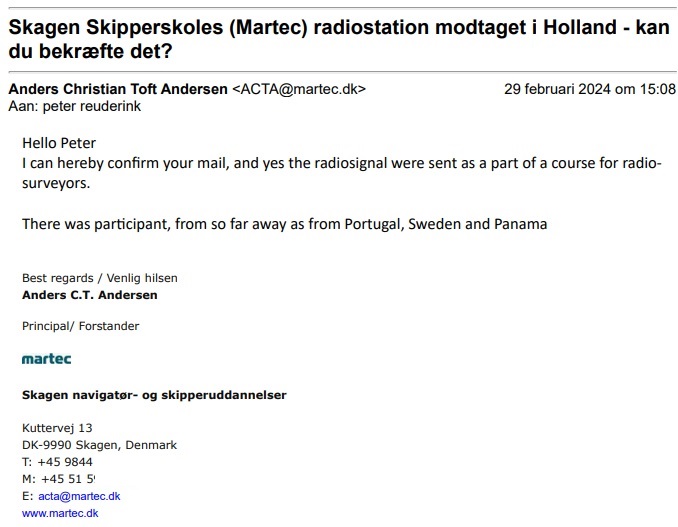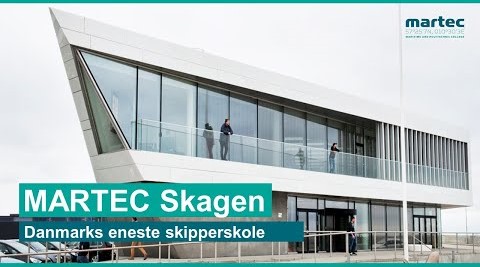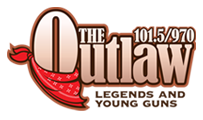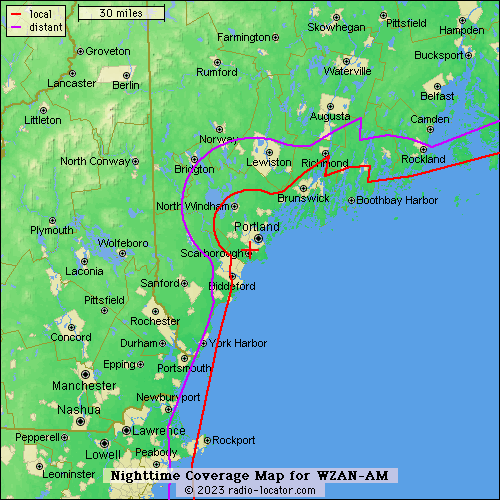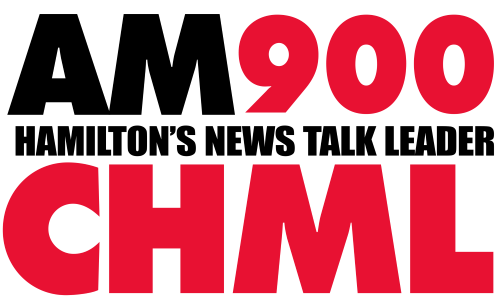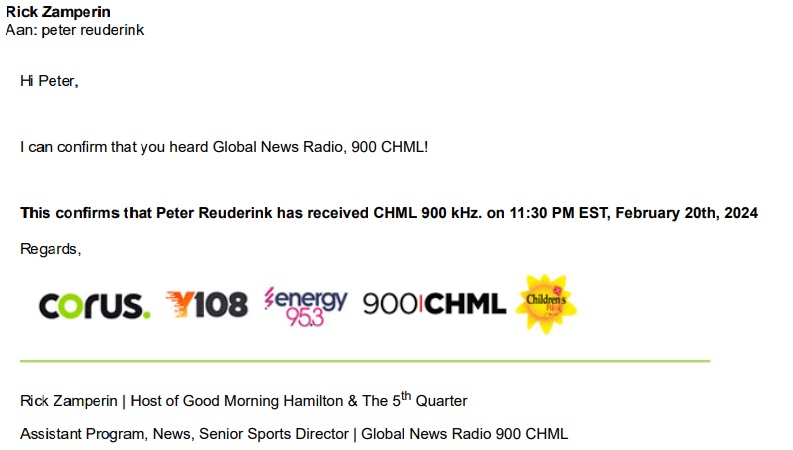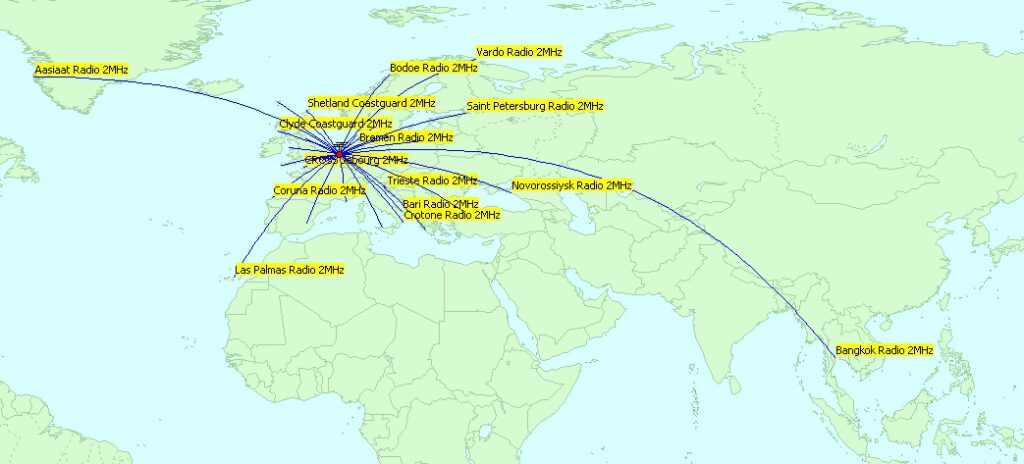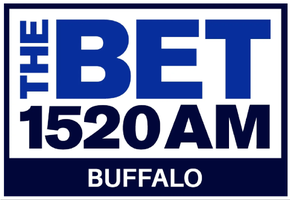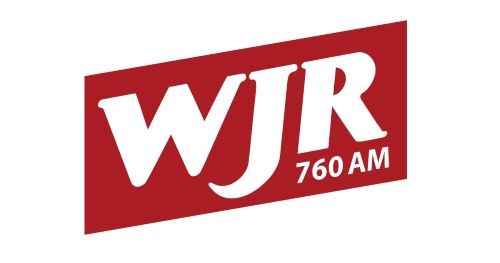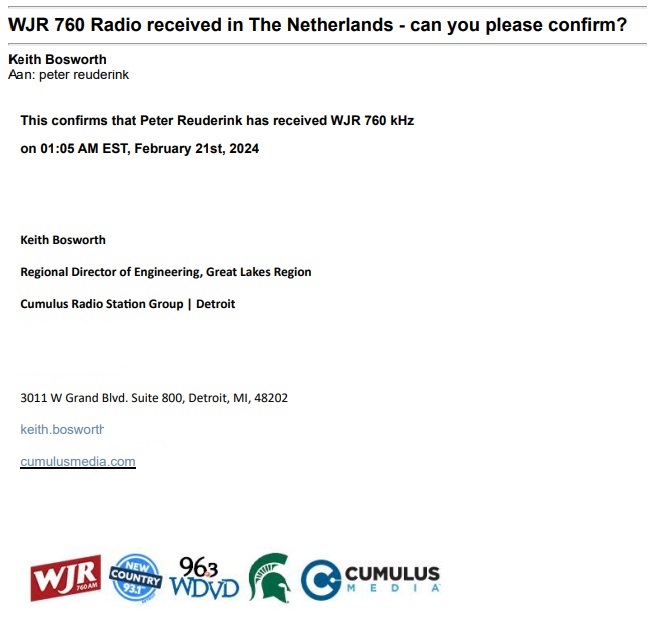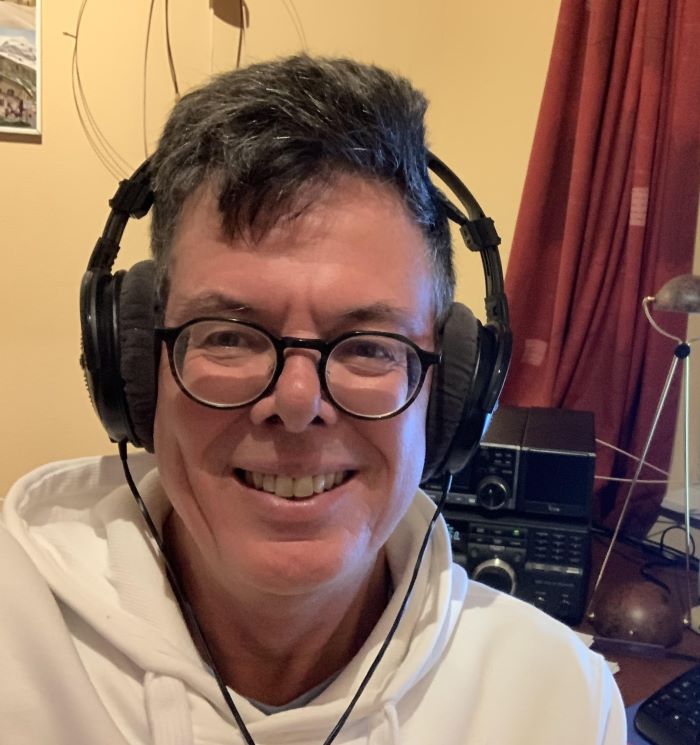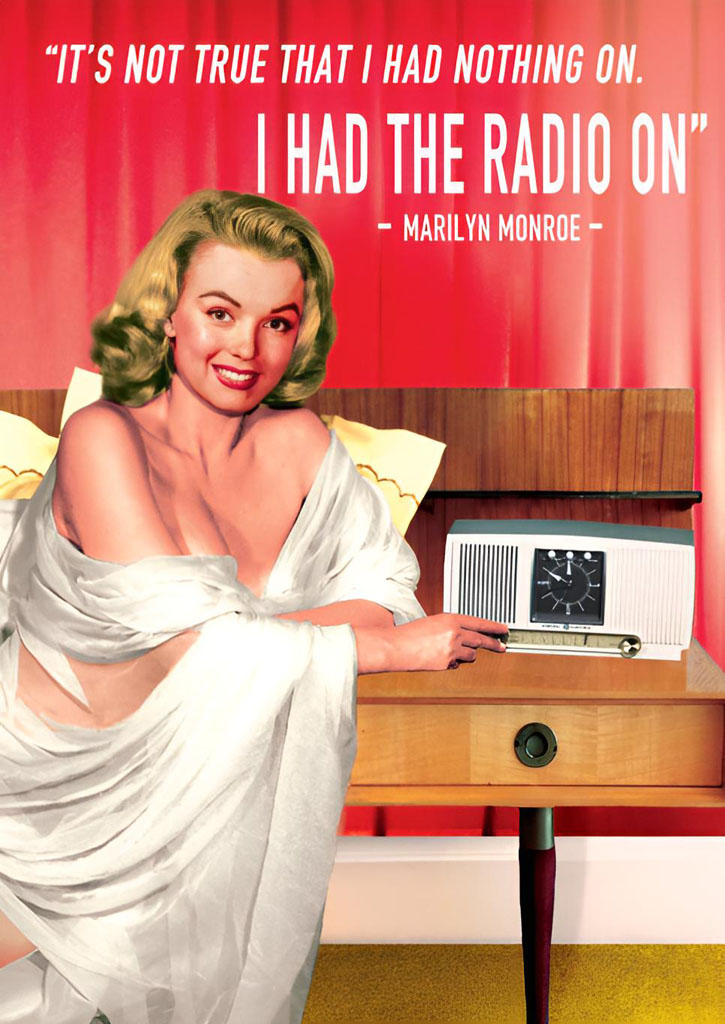A fully detailed QSL letter from Malin Head Radio 518 kHz. Watch officer Mc Dermott was so kind to confirm my report within minutes. I sent my report to: mrsc.malin@transport.gov.ie . Its my second QSL from Malin Head Radio. The first one was from 31 years ago for a USB transmission on 2182/1677 kHz.
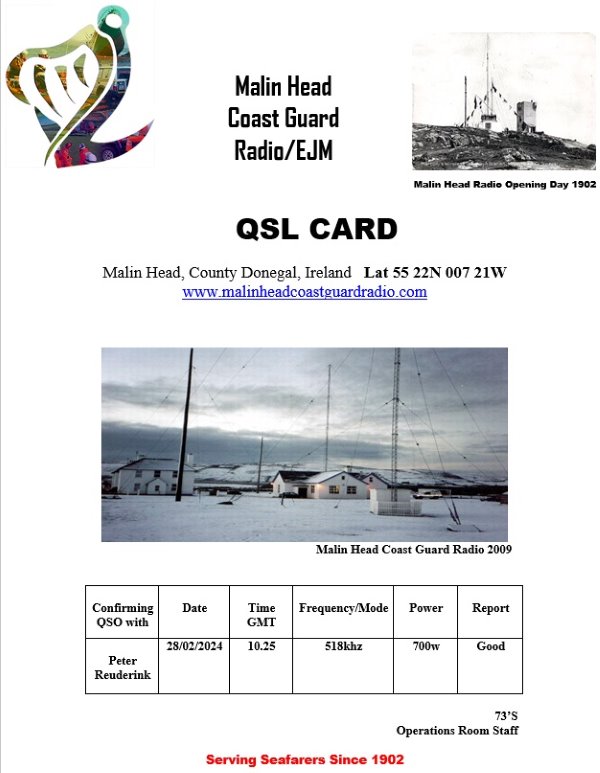
Malin Head Coast Guard Radio has a nice facebook page posting their current activities. But I also found a “facebook legacy site” with some interesting information:
The station was opened in 1902 by the Marconi Marine Company on behalf of Lloyds. Located at the northernmost tip of Ireland, this station was ideally positioned to communicate with shipping coming across the Atlantic or from northern waters. But already in 1805 Lloyds had a signal station on this location.
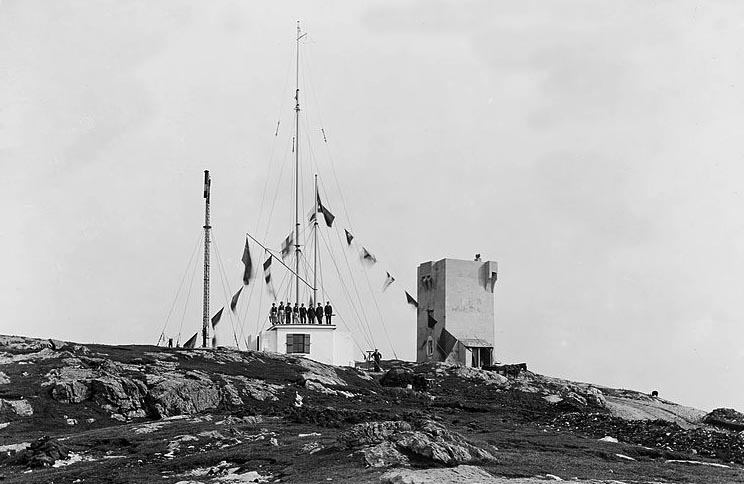
In 1988 the morse code services from Malin Head on 500 and 421 kHz were discontinued. That turned out to be a bit early. There was one instance where the station’s 500kHz automatic alarm receiver, which remained on watch, was activated by the signals of a sinking ship far out in the Atlantic. Malin Head Radio was the only station able to copy the weak signals from the ship’s lifeboat. With the station’s transmitters dismantled, return transmissions had to be made by her sister station Valentia Radio – not the most ideal means of conducting a distress situation.
Thanks to the team of Malin Head Radio for issuing QSL to us DX folks. And once again I learned something just by listening to the radio!
